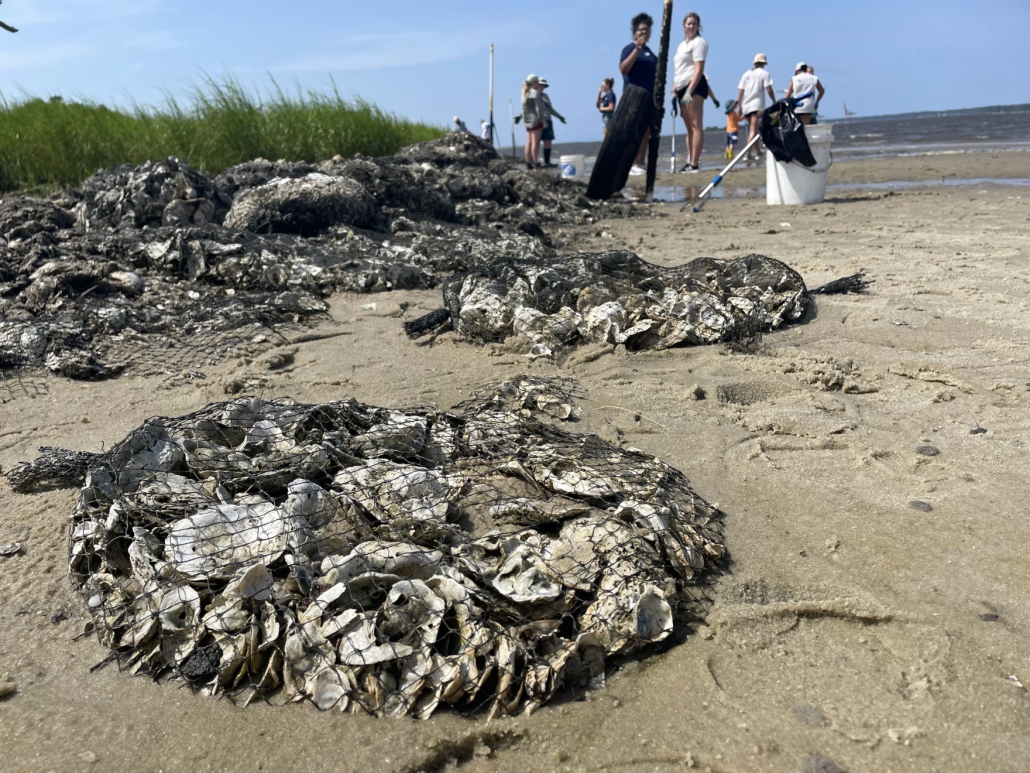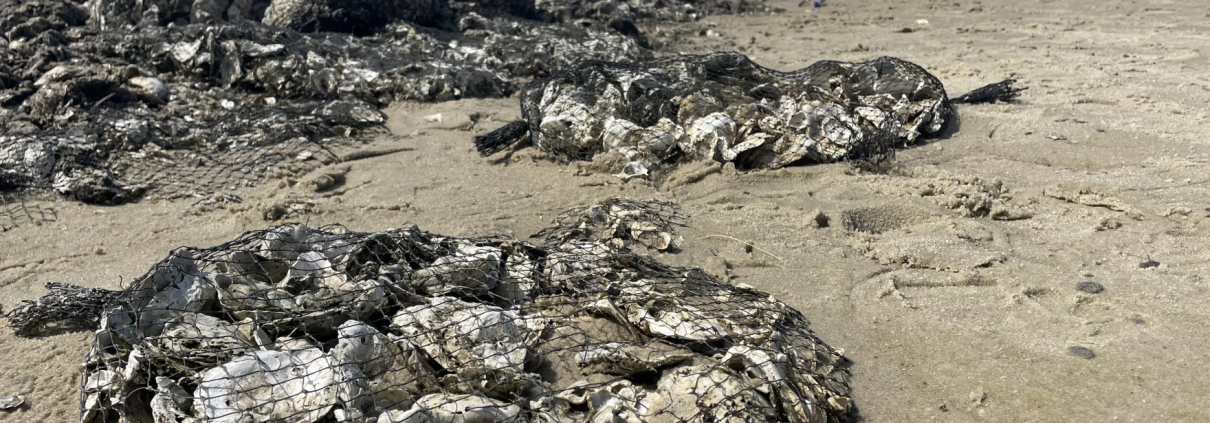Check out the living shoreline that helps stop erosion
by Kelly Kenoyer on July 27, 2022 | Reprinted from WHQR

Oysters are an important part of the intracoastal ecosystem, in addition to being delicious. And used currently, their shells can protect against erosion.
NC Coastal Federation set up a “living shoreline” in Carolina Beach state park in 2015, and holds occasional events to maintain the structure.
Farther toward the parking lot of the park, the sandy beach by the water is sloped and narrow. But it broadens close to the living shoreline, giving volunteers plenty of space to operate.
Bonnie Mitchell is the coastal education coordinator for NC Coastal Federation and says that’s no accident: the living shoreline helps extend the beach.
“So essentially what we’re looking at is a structure of bagged oyster shells that have been placed on top of each other in a strategic place along the shoreline of the Cape Fear River,” she said. The black mesh bags keep the oyster shells in place while allowing water to filter through, simulating a natural oyster bed.
Volunteers gathered on Friday, July 22 to pick up trash and put bags that had washed loose back into place. Dozens of tiny fiddler crabs, snails, and hermit crabs gathered near the water or in the lush wetland vegetation bunched behind the oyster shell structure, while pelicans flew past and egrets stood patiently in the shallow water. The shells and the wetland vegetation were both installed in 2015, and have thrived since.
The federation considers these events a great educational opportunity for those who participate: folks like Tara Wensel-Hinkle, who came with her daughter Lilly.
“I think it’s important for her to know that volunteering is something that she should do,” she said, ducking down to admire a shell her daughter showed her. “Being of service to the planet and to each other.”
The living shoreline also provides a habitat for new oysters to get their start in life- and once that happens, they’ll help keep the river clean by filtering 50 gallons of water a day each. And it’s more effective against erosion than man-made structures.
“For decades, the typical response to shoreline erosion was to build a bulkhead,” Mitchell explained. “But we find that this only increases erosion on down drift property, it degrades fish habitat, it interrupts fish larvae transport. We want to promote something that’s going to help with controlling erosion, but while also providing a real environmental benefit.”
Many fish spend part of their lifecycles in these oyster reefs, and once new oysters begin to grow there, they’ll filter the water and help mitigate the problems caused by stormwater runoff.
Click here to sign up to volunteer with NC Coastal Federation.




